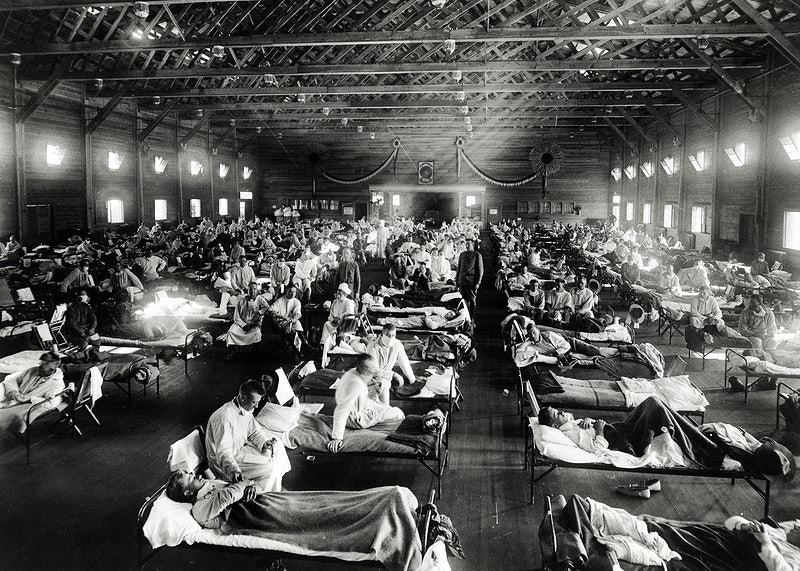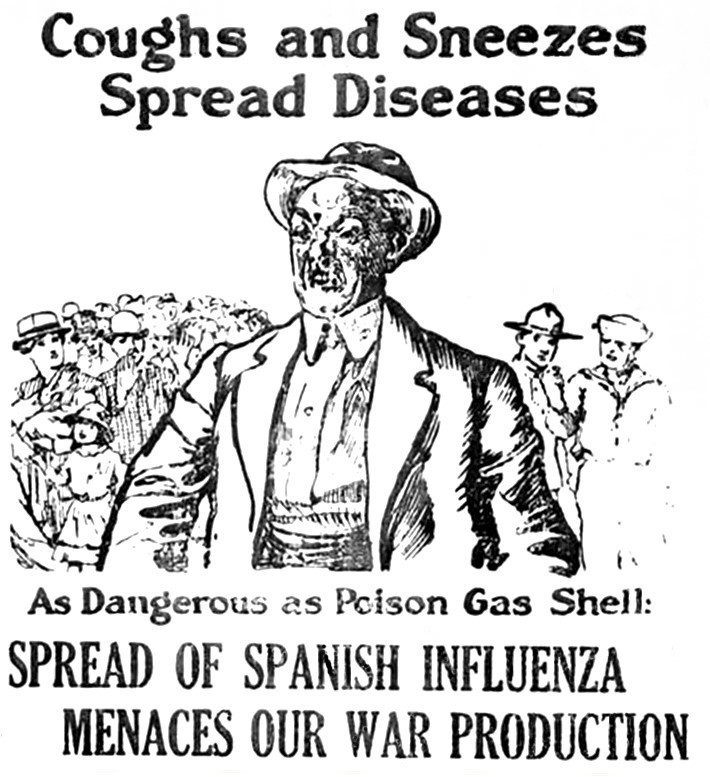Case File: Spanish Flu
- Home
- Short Term Diseases
- Pandemic!
- Special Exhibitions
- Case File: Spanish Flu

“TRAVELER HAS SPANISH FLU” This quote appeared on the front page of the Wooster Daily News for Tuesday October 8, 1918.[i] The paper reported that there were no cases in the county aside from this traveler who was a cook taking a train from North Dakota to Washington D.C. The article ends by saying that nearby Plain and Franklin Townships had closed their schools because Shreve was experiencing a rough outbreak.
This story was beginning to play out across the United States as numerous towns and cities, both big and small, were becoming aware of this new ‘Spanish Flu’ sweeping the country and the rail lines. Nearby Cleveland was slowly beginning to close some of its movie theaters as it readied itself for the impact of the Spanish Flu.[ii]

Health officials framed these health efforts as war measures because World War I was ongoing. At the time there was a great fear on how Spanish Flu would affect soldiers in the army where there were high outbreaks, and how it would affect overall war production. In the following images you see how Spanish Flu would rip through army bases such as the bedridden soldiers from Fort Riley in Kansas and how U.S. propaganda tried to persuade the public on the threat of the incoming storm.
That storm would go on to claim nearly 675,000 lives here in the U.S. which is easily eclipsed by the 50,000,000 lives it destroyed around the world. These losses were the unlucky ones out of an estimated 500,000,000 infected. Wooster was no exception, two weeks later on October 21, 1918; the Wooster Daily Republican would report that 238 cases of Spanish Flu had been reported in the county.[iii] That same edition of the paper would also report on how that several residents in Orrville had died because of the virus[iv] along with a College of Wooster student who died at her home after leaving campus to try and escape the outbreak.[v]
[i] “Traveler Has Spanish “Flu”,” Wooster Daily News (Wooster, OH), Oct. 8, 1918.
[ii] “Influenza Encyclopedia,” Cleveland, Ohio and the 1918-1919 Influenza Epidemic | The American Influenza Epidemic of 1918: A Digital Encyclopedia (The University of Michigan Center for the History of Medicine and Michigan Publishing, University of Michigan Library), accessed July 1, 2020, https://www.influenzaarchive.org/cities/city-cleveland.html.
[iii] “238 Cases Are On Book Today,” Wooster Daily Republican (Wooster, OH), Oct. 21, 1918.
[iv] “Personals,” Wooster Daily Republican (Wooster, OH), Oct. 21, 1918.
[v] “Student Girl Dies From Flu,” Wooster Daily Republican (Wooster, OH), Oct. 21, 1918.
Header: “1918 H1N1 Virus Particles.” The National Institute of Allergy and Infectious Disease. Accessed July 1, 2020. Online at Flickr.
Figure 1: “Emergency Hospital During Influenza Epidemic, Camp Funston, Kansas.” National Museum of Health and Medicine. Accessed July 1, 2020. Online at Wikipedia.
Figure 2: “Coughs and Sneezes Spread Diseases.” The Diamond Drill. Crystal Falls Michigan. October 5, 1918.

